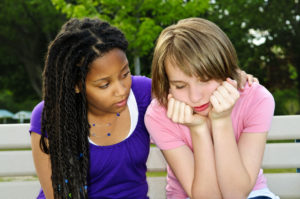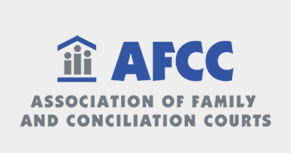Anxiety is the intense, and oftentimes overwhelming, feeling of being worried, afraid, or nervous. At some point in our lives, we’ve all felt anxious and it is normal to feel some anxiety in certain situations, such as having to take a test or giving a presentation. A little anxiety can sometimes even motivate us to prepare for situations and to perform better. It is normal for children to have fears and worries and many times, theses worries and fears go away on their own. However, when these feelings start to get in the way of daily functioning, it can cause significant distress and dysfunction for the child and their caregivers. It is important to consider how much anxiety the child is facing, how long it has been a concern, and how much it is getting in the way.

In order to understand anxiety, it can be helpful to understand some of its biological basis. Our bodies are designed to protect us from physical and perceived harm through our “fight or flight response”. When there is a sense of danger, our brain activates our alarm system and sends signals to our body to “fight” the threat (physically or through yelling and screaming), “flee” (run away or avoid the threat), or sometimes even “freeze” (staying still or playing dead). Sometimes this alarm system is triggered even when there is no threat of actual harm or risk and due to this response system, symptoms of anxiety in children can show up in the way they feel, how they think, and how they act. As a caregiver of a child with anxiety, you might notice these changes, or signs and symptoms, in your child:
Feelings:
- Racing heart
- Feeling dizzy or lightheaded
- Headaches
- Stomach-aches or feeling nauseous
- Trouble falling or staying asleep
- Trouble concentrating or focusing
- Tense muscles
- Sweating
- Difficulty breathing
Thoughts:
- Thinking that something bad will happen to them or someone they love or care about
- Overthinking situations and expecting worst-case-scenarios to come true
- Being stuck or fixated on a particular fear and not being able to stop these thoughts
Behaviors:
- Avoiding situations or people that make them feel worried
- Clinging to people or seeking a lot of reassurance from caregivers
- Tantrums or meltdowns
- Engaging in repetitive rituals in hopes that if they engage in a certain behavior, the perceived “bad thing” won’t happen
There are different types of anxiety disorders and they are often related specifically to the child’s fears and worries and how the child reacts. The five types of anxiety disorder diagnosed in children and youth are:
Separation anxiety: fear or worry that something bad will happen if the child is separated from caregivers, like at school or being babysat.
Social Anxiety (or social phobia): fear of being embarrassed or humiliated in public or social situations. Children or youth may worry that they will say, do, or wear “the wrong thing” and that everyone will notice.
Generalized Anxiety: ongoing and intense worries over just about anything . They often think about the “what ifs”.
Phobia: unrealistic or overwhelming fear of a specific thing or situation (e.g. spiders, flying in planes, needles, water).
Panic: characterized by panic attacks – a sudden and intense feeling that you are having a heart attack or about to die because of physical symptoms of anxiety (racing heart, dizziness, shortness of breath).
Along with these disorders, Obsessive-Compulsive Disorder, Postraumatic Stress Disorder, and Selective Mutism are also seen in children and youth and are also based in feelings of anxiety.’
Anxiety is rarely caused by one single factor and often occurs because of a combination of things, such as stress, previous negative experiences, or chemical imbalances in the brain. Sometimes anxiety can be a family trait and children with a close relative with anxiety may be more likely to experience it.
Because anxiety is one of the most commonly diagnosed mental health concerns, it is also one of the most treatable. Therapy is oftentimes aimed at teaching children calming coping skills to relax when feeling stressed or overwhelmed, learning about and challenging thought patterns that may be contributing to why they are feeling worried, and gradually taking steps towards facing situations which make them fearful. As a caregiver of a child with anxiety, it can also be beneficial to get guidance to help develop patterns of support and promote children in taking steps to face their anxiety.
~~~





